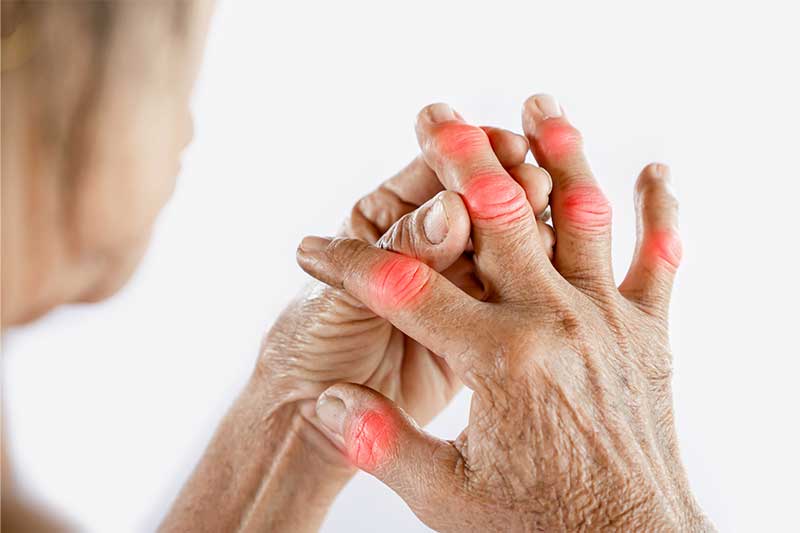Complementary therapy and self-care can help reduce arthritis discomfort. That’s what we’re looking in this article.
There are many ways to manage arthritis pain. However, no single treatment is guaranteed to produce complete and consistent pain relief, and doctors say many patients have unrealistic expectations about how much improvement medicine can provide. The goal, they say, isn’t necessarily to eliminate all pain, but to learn to manage it so it isn’t the focus of your life.
Many non-drug options are available to help you achieve that goal, either alone or in combination with medical therapies. It starts with being good to your body.
Consume healthfully:
The advantages of adhering to a nutritious, anti-inflammatory diet are difficult to overstate. Numerous studies have demonstrated the substantial reduction of inflammation and pain that can occur from a diet high in plants. Several anti-inflammatory eating regimens, such as the Mediterranean, vegan, vegetarian, and ketogenic diets, were examined in a 2021 meta-analysis of seven randomized controlled studies. All resulted in a significant decrease in discomfort. While not all plant-based diet trials have had such encouraging outcomes, the majority have demonstrated efficacy in treating chronic pain.
Continue to exercise:
Exercise on a regular basis is equally as vital as food. It can greatly reduce pain and strengthen the muscles that support the joints while also enhancing flexibility, balance, and mood. Make an effort to engage in 150–300 minutes per week of moderate-intensity aerobic activity. According to corporate and federal recommendations, strength training should be done twice a week. Try starting with two days of weightlifting or strength training and a vigorous 30-minute walk on at least five occasions. Ask your doctor for a recommendation to a physical therapist who can teach you how to get the most out of your workout if you’re new to exercising.
Enjoy a (productive) break:
Strike a balance between recovery and activity. This gives your body enough time to rebuild muscles after working out. Active recuperation is a process that involves reducing the level of exercise following higher intensity activities, such as walking or biking, rather than doing nothing at all.
Improve your posture:
Pain in other areas of your body can result from years of compensating for a bad hip or knee. Back pain may result from slouching over a computer, and misaligned neck muscles can be caused by prolonged screen staring. A physical therapist can assist you learn how to sit, stand, and move in order to prevent more issues if your existing pain grows worse or if you have new discomfort.
Try cold and heat:
Heat helps the body release waste items, relax tense muscles, and improve blood flow to sore joints. In addition to inhibiting inflammatory chemicals and slowing the transmission of pain signals through neurons, cold reduces blood flow to minimize swelling. For pain and swelling during activity, during a flare-up, or in the initial 48 to 72 hours following an accident, cold therapy works best. Afterwards, experiment with alternating warm and cold compresses or soaks (moving back and forth after approximately 10 minutes). To achieve a more intense cold, place half a paper cup of frozen water over hurting areas and massage the ice for approximately ten minutes. Use a paper towel or delicate cloth to protect your skin. Warm paraffin wax, an old standby for heat therapy, helps ease the discomfort in your hands and feet. After the wax has solidified, leave it on and peel it off. Bonus: An occlusive moisturizer that helps plump and soften skin is paraffin wax.
Authentic Complementary Medicines

Acupuncture:
Acupuncture has been closey and frequently with suspicion examined since it gained popularity in the West decades ago. Most studies, of which there are many, have concluded that acupuncture is effective in treating a variety of ailments, most notably chronic pain. However, there are still detractors, and the results have been conflicting. A 2020 assessment of review articles and randomized controlled trials, for instance, revealed that acupuncture was beneficial for treating fibromyalgia, hip osteoarthritis, and knee osteoarthritis, but not for treating rheumatoid arthritis or hip osteoarthritis. A different examination of thirty-two randomized controlled trials revealed that fire acupuncture—which makes use of heated needles—performed better for pain management than conventional acupuncture. Additional research indicates that traditional acupuncture is just as beneficial for treating any kind of pain. These inconsistent findings could be the consequence of the length and caliber of the research, not an issue with acupuncture per se.
Massage:
Different types of bodywork can offer short-term pain alleviation. For relaxation and stress reduction, try a full-body Swedish massage; for deeper muscle tissue, try deep-tissue massage, which releases knots in deeper tissue; or try myofascial release, which employs long, stretching strokes to release tension around connective tissue.
Psychotherapy:
Living with pain may be made easier with the use of some counseling approaches that can lessen worry, lessen emotional discomfort, and enhance sleep.
Hypnotherapy or hypnosis:
You are more receptive to recommendations while you are in this laid-back, attentive mood. Hypnotherapy, like acupuncture, has a wide range of applications, however the evidence for its efficacy is not as strong. Significant pain reductions have been demonstrated in numerous randomized controlled trials following roughly eight hypnosis sessions. Less sessions appear to have less of an impact.
Biofeedback:
A equipment that provides biofeedback will demonstrate how your thoughts and activities impact your autonomic nervous system. This regulates the release of stress hormones as well as the functions of the stomach, intestines, lungs, and heart. Gaining control over your breathing and heart rate will help you gain control over other bodily responses, such as pain.
The Cognitive Behavior Therapy (CBT):
Through CBT, a psychotherapist assists you in recognizing harmful behaviors (such as reducing your activity level or enjoying enjoyable activities as a way to cope with pain), negative beliefs (about the future, other people, and yourself), and emotions (such as melancholy, guilt, and worry). This can help you become more conscious of the ways in which harmful patterns arise and comprehend the relationship that exists between thought patterns and emotions. Next, in order to empower you to take an active part in managing and reducing pain, you receive training in pain coping skills like goal-setting, imagery, and relaxation techniques.




